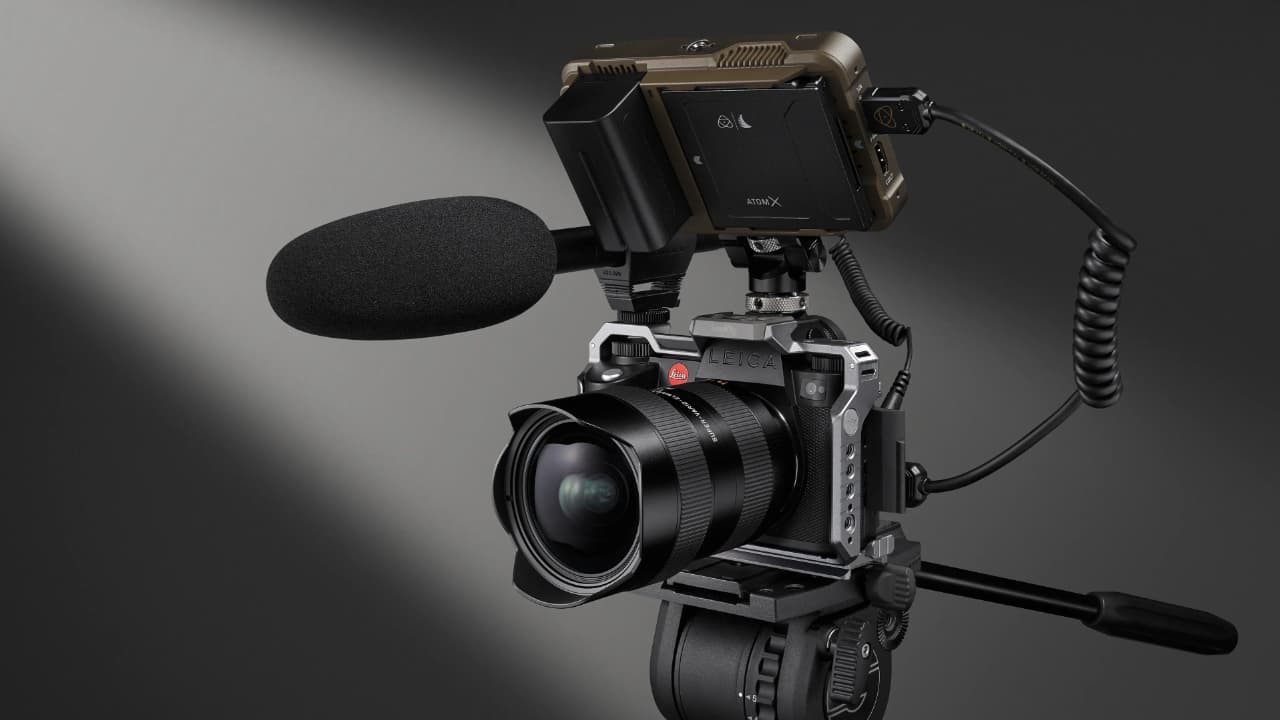
The new Leica SL3-S offers some decent upgrades over previous models, but at $5300 is probably one for the hardcore Leica enthusiasts.
Premium brands are premium brands for a reason. There is a hardcore of followers that can afford to pay more for both the name and the quality they represent. But whether it's lenses out of China or cameras out of everywhere, there’s a constant erosion of the bottom of their market.
That’s why they tend to do things like lend their name to smartphone optics or market apps that reproduce their color science. And that’s why they constantly evolve their cameras and try and find a middle ground between expensive and unattainable and just reassuringly expensive enough. Certainly, the content that can be created with them is spectacular.
Leica celebrates the 100th anniversary of one of its most significant releases this year, marking a full century since the Leica 1 was presented to the public at the Leipzig Spring Fair in 1925. That was the company’s first mass-produced 35 mm camera and it’s been performing that balancing act with the mass market ever since. By the looks of it, the Leica SL3-S doesn’t quite get it right.
So, what do you get? You get a 24MP sensor, 48- and 96-megapixel multi-shot modes, and a new, and by all accounts, fairly impressive autofocus system. That offers continuous shooting at up to 30 frames per second with full autofocus support; indeed, the company says it is the fastest Leica system camera ever built. Dynamic range of up to 15 stops is matched with an ISO range of 50 to 200,000.
It’s lighter and more compact than its predecessors, records videos in a resolution of up to 6K, and offers 3:2 open-gate recording. That means portrait format videos can be recorded in 4K, 9:16 without any loss of quality and the field of view in recorded material can also be determined retrospectively.
It records HDMI-RAW in 5.9K at 30 fps to external display recorders, and, equipped with a CFexpress type B interface, ProRes 4:2:2 HQ in 5.8K at 30 fps or C4K at 60 fps can also be internally recorded without any recording time limits. It is also possible to record directly to an external SSD hard drive via the USB-C interface. A dedicated timecode interface enables professional synchronisation of image and sound on set.
The viewfinder runs at up to 120 images per second and a resolution of 5.76 million pixels. As well as slots for CFexpress type B and UHS-II SD memory cards, it also features a USB-C port, a full-size HDMI 2.1 output for external LCD panels or recording devices, Bluetooth and Wi-Fi with MIMO technology, and will support Camera-to-Cloud functionality at some point later in 2025 via frame.io.
The SL3-S is also the first camera in the SL-System to be equipped with content credentials technology in accordance with the Content Authenticity Initiative (CAI) for photos.

It’s not a bad camera, of course, Leica doesn’t make them. But you can find a very similar spec elsewhere for a lot less money. The Panasonic S5 IIX, for instance, is two years old now and can do a goodly amount of what the Leica can for under $2000. And for most people you suspect that will be an extremely powerful argument.
tl;dr
- The Leica SL3-S features a 24MP sensor, multi-shot modes of 48 and 96 megapixels, and boasts the fastest autofocus system from Leica, with continuous AF shooting up to 30 frames per second.
- It captures video in resolutions up to 6K and supports advanced recording options, including HDMI-RAW in 5.9K and ProRes 4:2:2 HQ in 5.8K, with no recording time limits.
- With a compact design, the camera incorporates modern connectivity options such as USB-C, Bluetooth, and Wi-Fi, and will support Camera-to-Cloud functionality via frame.io later in 2025.
- The SL3-S is priced at $5300, which may deter many potential users when alternatives with similar specs are available for significantly less, such as the Panasonic model under $2000.
Tags: Production Cameras Leica


Comments